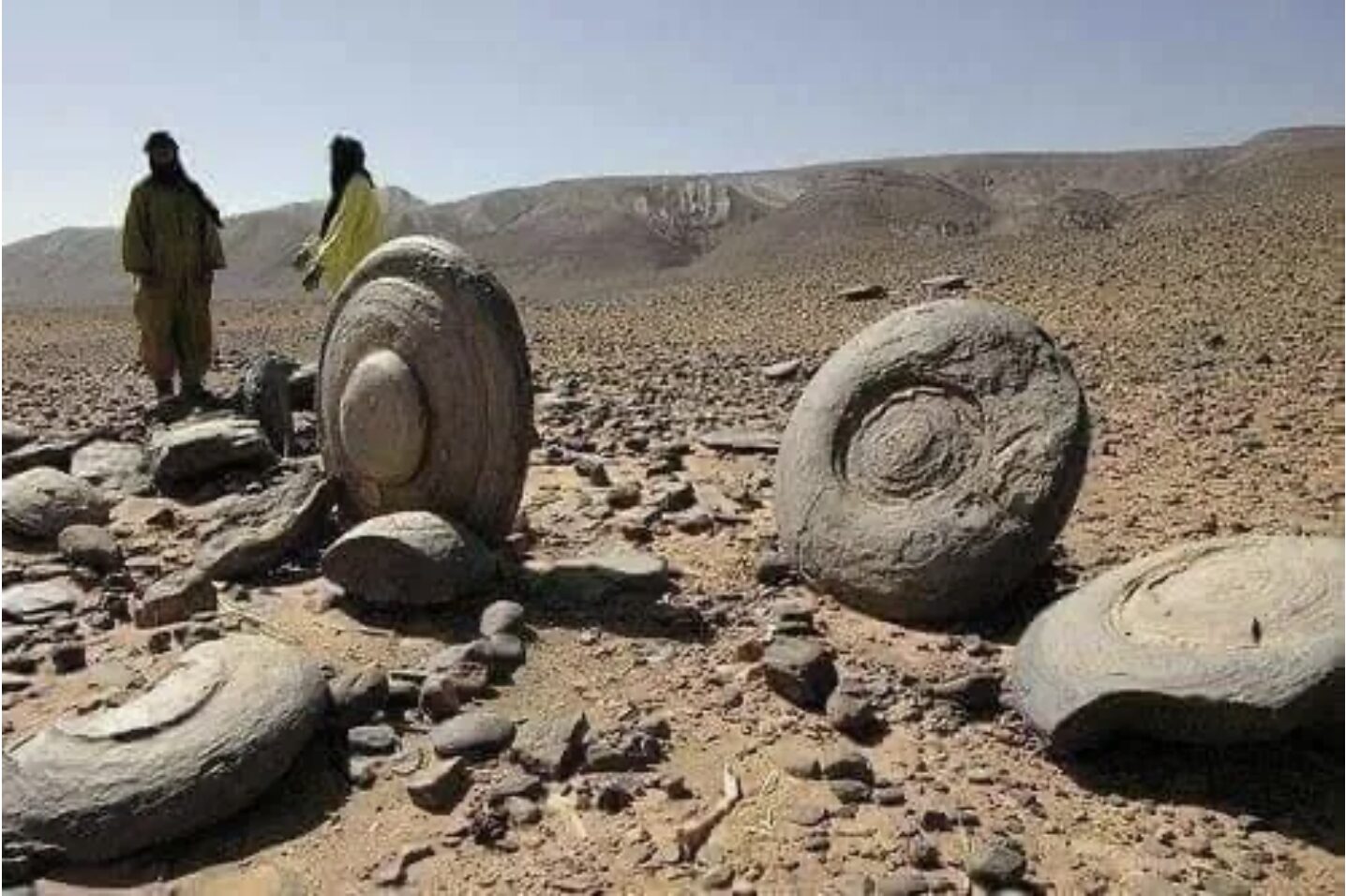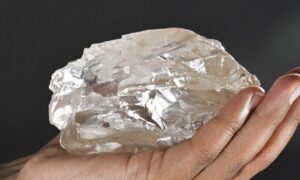You don’t need to be an astronaut or a billionaire to visit other planets. Why? Because they’re right here on Earth. Deep in the Libyan Desert is an obscure valley called Wan Tikofi — the Valley of the Planets. It houses hundreds of planetary-looking rock formations that still confuse scientists today.
Varying in size and shape, these unusual rocks do not just resemble celestial bodies. In some ways, they seem to be alive…
Background
There is very little information on the Valley of the Planets, apart from a few photos circulating on Facebook groups and Reddit threads. These photos capture gigantic spherical and disk-like structures that desert wanderers stroll past on a hot day. The valley stretches for 30km, and the mysterious rocks are scattered throughout.
Those inhabiting this area are nomadic herders called the Tuareg or “blue men.” The Tuareg have been around since the 4th century AD, roaming the deserts of Libya, Algeria, Mali, Niger, Nigeria, and Burkina Faso. While known for their remarkable adaptation to the harsh desert, the Tuareg have a special relationship with the stars and planets above. They used the constellations and planets to navigate because they traveled mostly by night to avoid the heat.
Anthropologists believe that the stars and planets were a significant part of their religious mythology in the pre-Islamic era. However, the information is lost to us with the introduction of Islam and the lack of written documentation of their practices. In their oral tradition, the Tuareg simply refer to the rocks as Kawakeb, which means “planets.”
Trovants
These rocks may look like planets, but they are actually a result of some complex geological processes. This only takes place in a handful of locations around the world. The rocks, called “trovants,” are compacted mixtures of sand, clay, and calcium carbonate. They take on various shapes and sizes, from huge spheres to flattish disks with a sphere in the center. Some rocks sit atop towering pillars and are 10m in diameter.
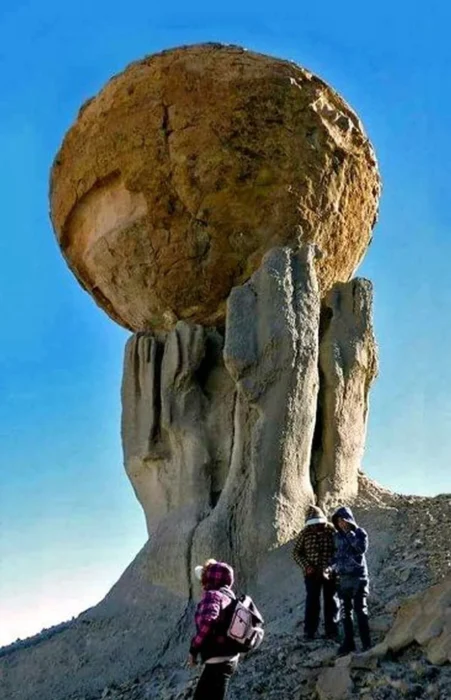
One of the quirks of these rocks is their ability to grow four to five centimeters every 1,000 years.
These “living stones” not only increase in size. They move and even “give birth” to pebbles. When you break one open, the rock has a series of rings, much like a tree does.
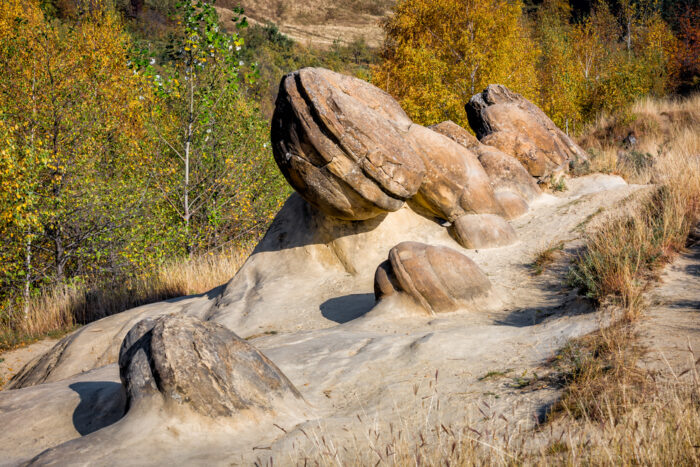
Odd-looking trovants. Photo: Mihaela luliana Stancu/Shutterstock
Previously, scientists thought the rocks were concretions. These refer to a hard, compact mass of sedimentary rock that forms by accumulating mineral matter around a nucleus through a process called cementation.
Concretions can take on various shapes, especially spheres and ellipses. They form from the precipitation of minerals from groundwater. They often appear in sedimentary rock, such as sandstone and shale, and can contain organic matter like fossils. But though similar in appearance to concretions, trovants are different.

Desert wanderers stroll through the Valley. Photo: thebrainchamber.com
Mechanics
These trovants date to the Middle Miocene (16 million to 11 million years ago), a chaotic period that featured frequent earthquakes. Scientists believe that this may have contributed to their origins.
But how do they grow? The answer is moisture. According to writer Jennifer Walker-Journey of HowStuffWorks, when rainwater contacts the rock, a reaction takes place between the chemicals and minerals, which causes the rock to gradually expand in size. The reaction creates a type of calcium carbonate “cement.” The more rain penetrates the rock, the more pressure builds up, and the rock “grows.”
Erosion shapes the trovants into spheres. For millions of years, rain, heat, and wind shaped the rocks, creating smooth surfaces of spheres, disks, or imperfect bulbous formations.

Romanian trovants. Photo: ncristian/Shutterstock
Romanian counterparts
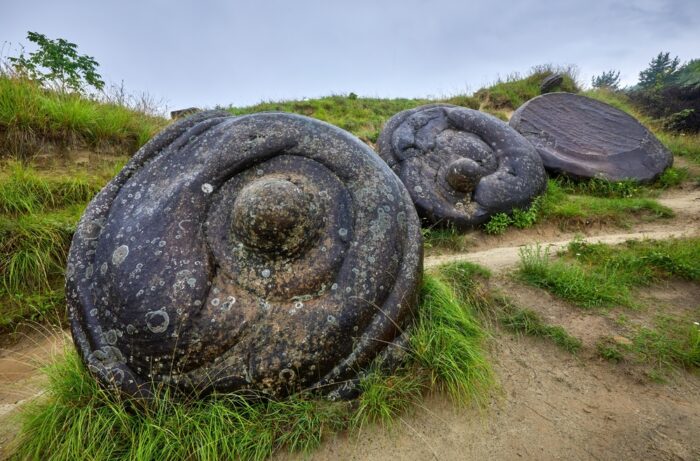
Trovants in Romania. Photo: Decebal Matei/Shutterstock
The Valley of the Planets has counterparts in Romania. Near the village of Costesti and in the Buzau Mountains, trovants have become a part of the local folklore. Villagers believe they possess magical powers and sometimes keep them as good luck charms in their homes.
Since they grow, the villagers believe the rocks will also help crops prosper. Other variants of the story say giants created them when they once roamed the earth. The rocks’ iconic status has earned them special government protection.
In a village called Ulmet, locals refer to the stones as Babele de la Ulmet, which translates as “Old Women of Ulmet.”
